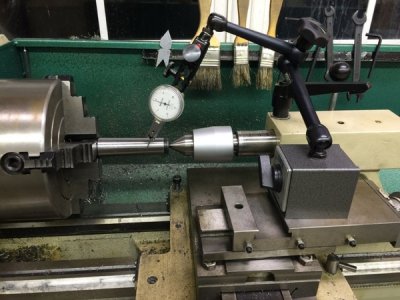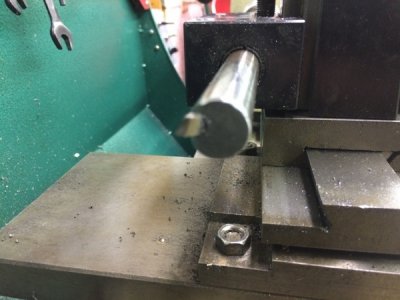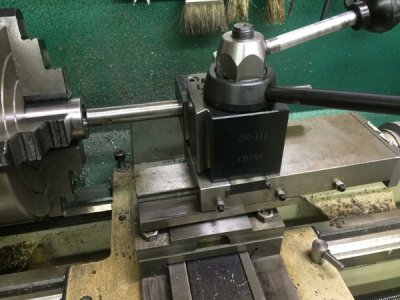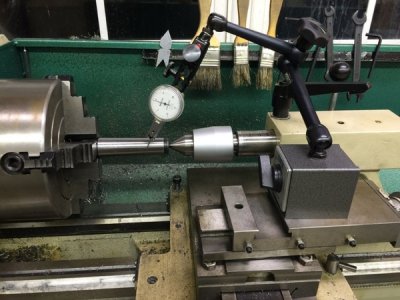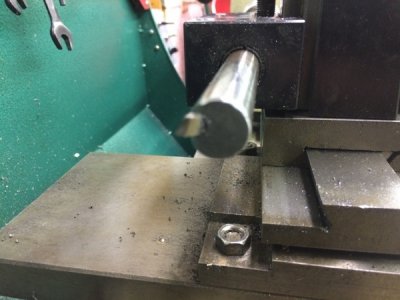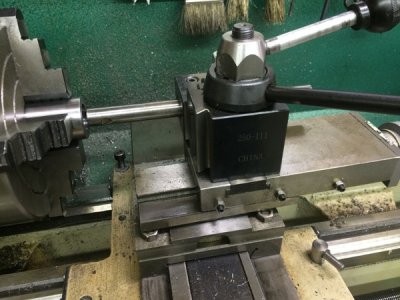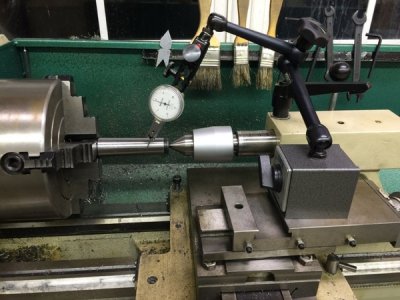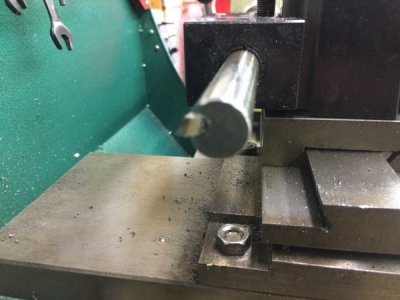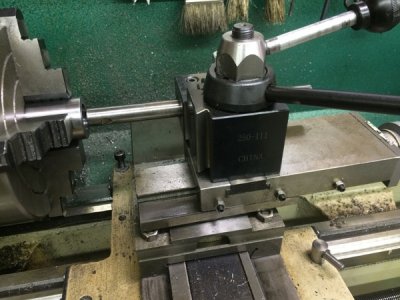So, a bit of a follow-up and another question...
I ended up drilling, then boring a hole through the piece. Then just used the roughing reamer to form the socket...
This seemed to work ok, but I've recently been able to determine that socket is not very well aligned with the center line of the part.
So, now I'm planning on trying to fit that. My plan was to try to bored the taper directly, then just use the finishing reamer to clean it up.
I started by centering a MT3 dead center in my 4-Jaw chuck, then using an indicator on my compound slide to mimic the MT3 taper angle...
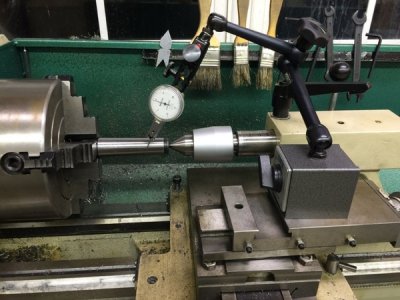
I got that all nice and precise, then realized that this is actually the reverse of the angle I really want on the compound...
I can't think of a good way to mount any MT3 tooling I have in the opposite direction, so I'm thinking about setting up my boring bar "upside down" with the cutting edge facing to the 'rear' and 'down' and running the lathe in the normal direction (counter-clockwise facing the spindle). So, with a setup like this:
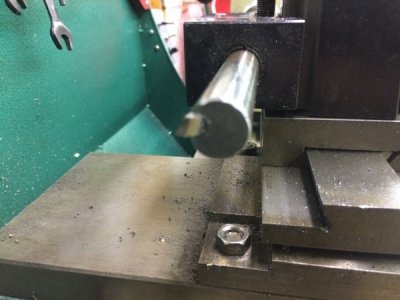
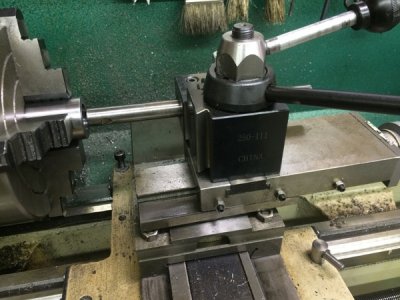
My question is -- Does this setup seem correct, or am I missing something obvious?
Assuming that's correct, I'm thinking the cutter should be pointing down just a hair, and be right on center or just a hair low... (because I've found that with a boring bar like this (but in a 'normal' cutting orientation) I seem to get a better cut with the cutter rotated just a tad "up" and "high"). Since this is effectively reverse, I'm thinking pointing slightly down. Sound correct?
Thanks!
